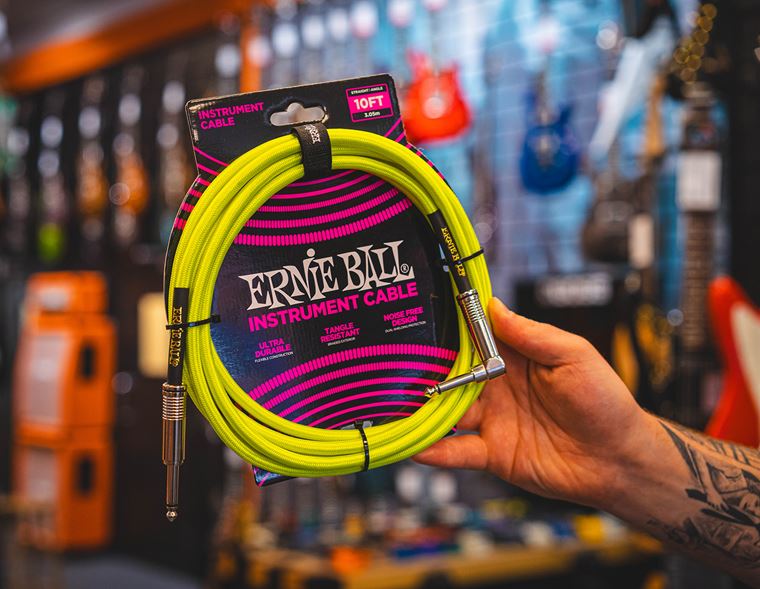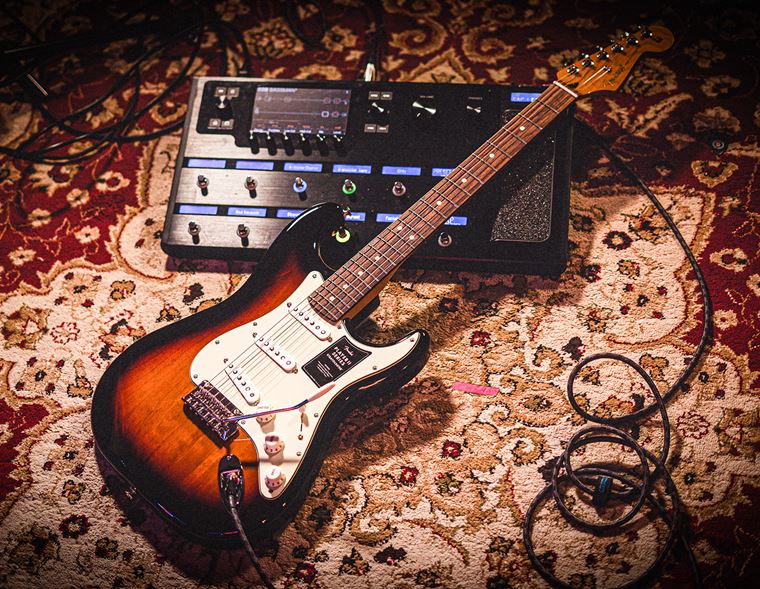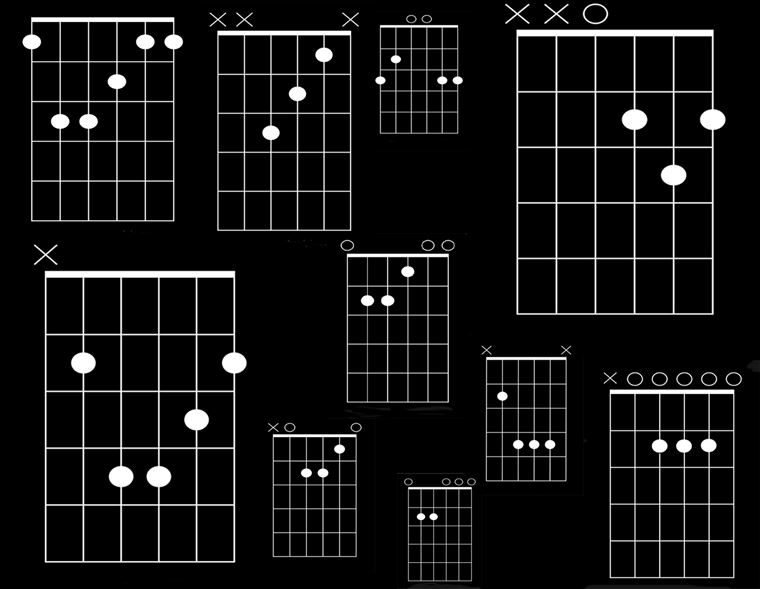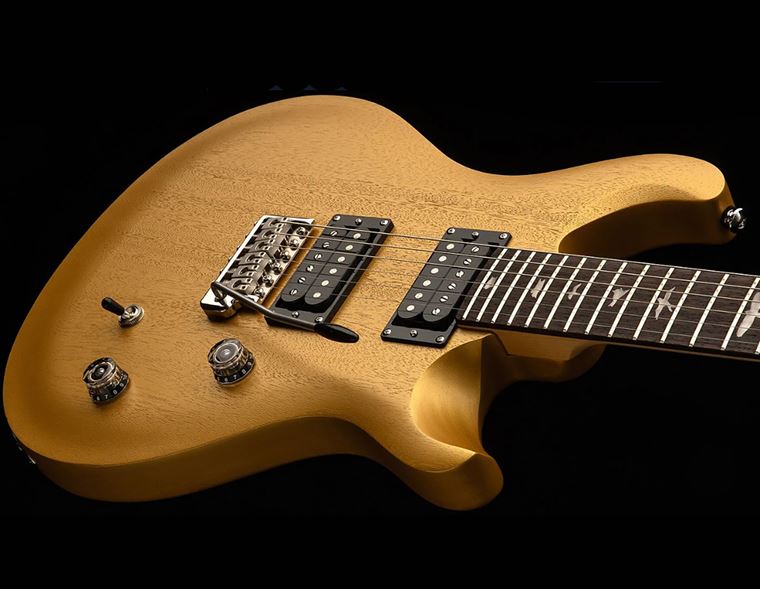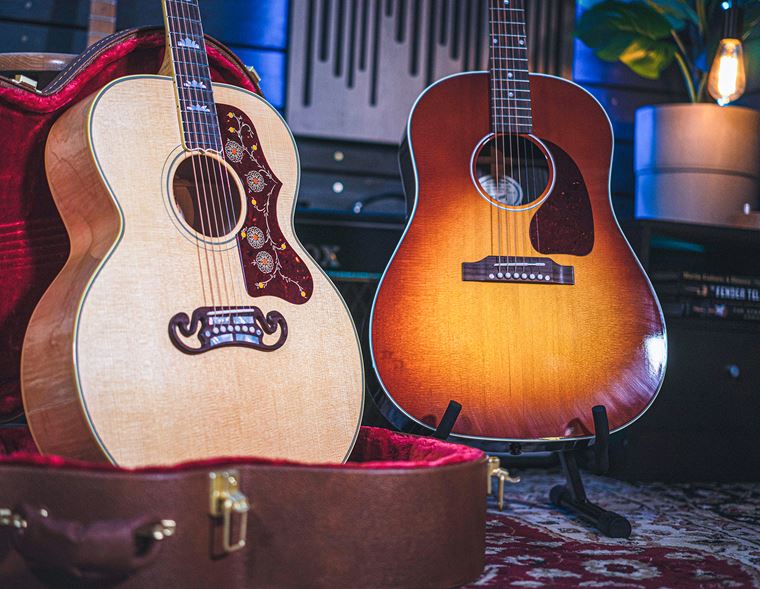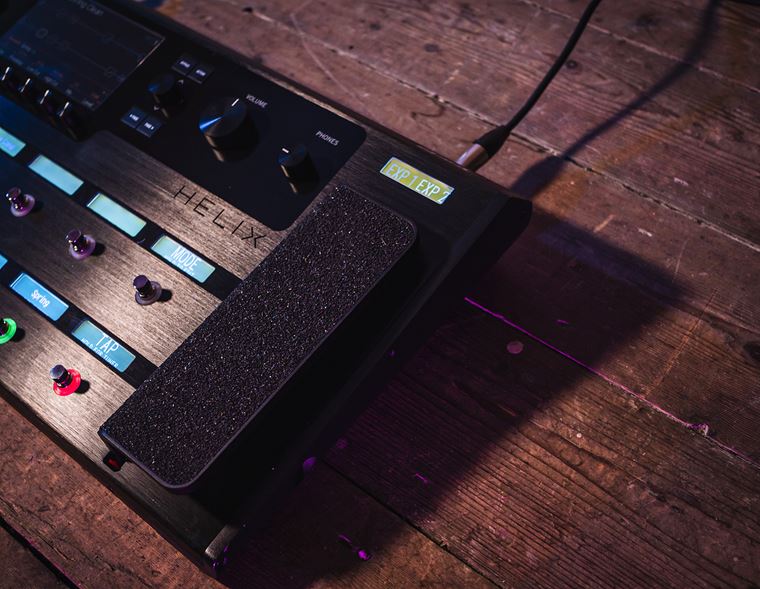Line 6 Helix and Yamaha HS Speakers: Ultimate Tone at Home (Updated for February 2025)
If you are like most of us, you’ll do most of your playing at home. Even busy gigging pros practice at home, record at home and prepare at home. So, it goes without saying that you need the best sounds, the most inspiring tones and the ‘realest’ feel you can get right there in your home playing space. It’s no good to put up with an okay ‘it’ll do’ home setup, whilst investing heavily on a huge road rig that spends most of its days gathering dust. Does it not make more sense to select gear that gives you the best, most satisfying experience for the majority of your playing time?
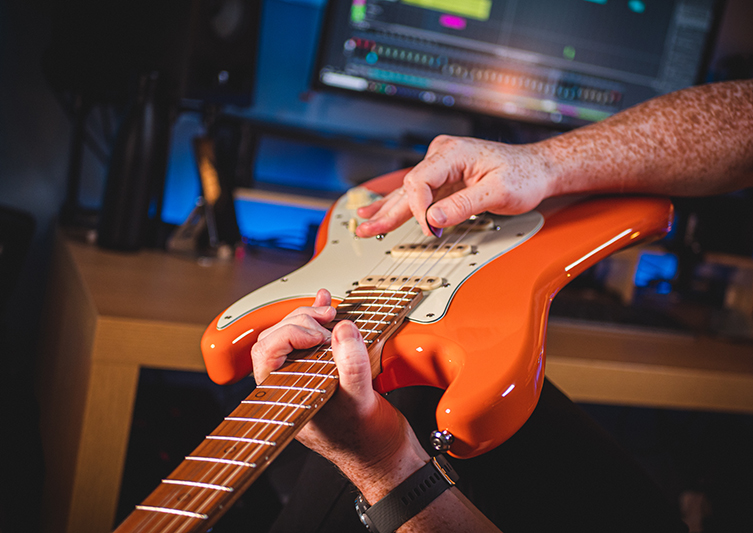
Contents
Digital Processing Comes of Age
Recording Guitar with the Helix and HS Monitors
Digital Processing Comes of Age
Sounds sensible to me! Now, it’s no secret that digital floor systems are what many players are turning to, now that they legitimately sound as good, if not better, than more traditional rigs. In the past, a floor FX unit gave you lots of flexibility, but sometimes stung you back for that by delivering less-than-awesome tones. Or, if the tones were pretty nice, the overall feel for the player was flat, lifeless and ultimately uninspiring.
Nowadays though, it’s a given that digital modelling units are delivering on all fronts. From the Line 6 Helix to the Headrush Prime and the Kemper Profiler, us guitar players have finally found the end of the rainbow. These units give us all of the sounds we need, modelled from real vintage amps and effects devices, and we can still enjoy all of the quick-switching functionality of multi-FX processors to get a best-of-both worlds situation for our sounds and set lists. It doesn’t hurt that these units weigh about the same as an average electric guitar, too!
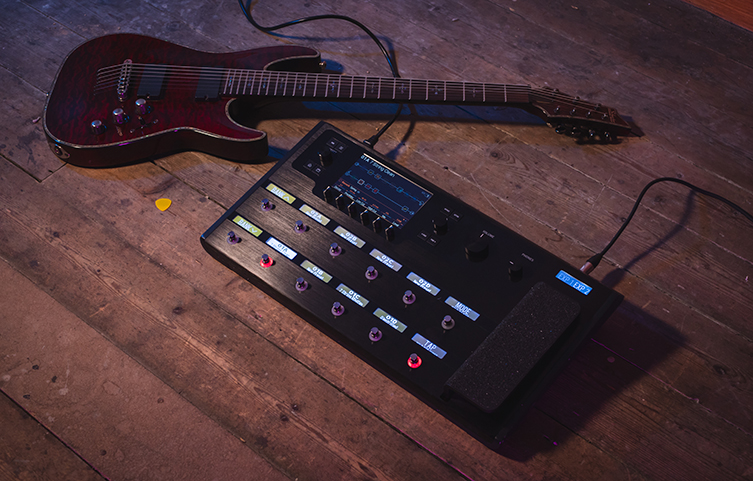
The other piece of the puzzle has been in the concept of impulse responses. Simply put, impulse responses seek to capture and emulate the physical changes brought to a given sound by its passage through a speaker and into the atmosphere. You know the ‘thump’ of a huge amp stack as you crank out an open D chord and feel your jeans flapping in the soundwave? That’s what was missing in the past, and IR (as we’ll refer to impulse responses from here on in) puts that physicality back in to your experience, no matter the volume.
Playing Guitar at Home
So, you’ve invested in such a unit, and you want the best from it. Let’s take the Line 6 Helix Floor as our example today. It’s a pro unit with an exhaustive selection of inputs and outputs on the back. The sounds are top class and they make deft use of IR technology to bring plenty of feel to your sounds. This is a great start, but what to plug into?
Whilst it’s possible to go into whatever guitar amp you have at home, it somewhat defeats the purpose of the modelling unit. It’s already recreating a series of world class amps for you, so by plugging into your house amp, you’re just stepping on your own feet and sabotaging your sound from the off. If you have a Helix or something similar, forget about an amp. What you need is a set of monitor speakers which do not colour your signal in any way. These are known as Flat Response speakers, and for my money, the Yamaha HS range is the best choice in terms of performance-to-cost. Neither the cheap option nor the top-end choice, they are certainly the one’s I'd go for first. Why? Read on.
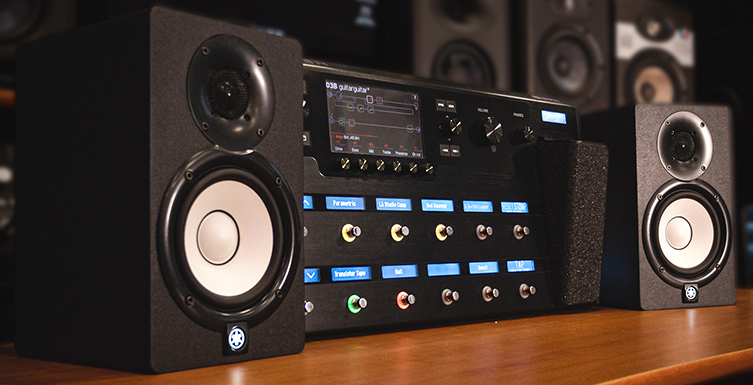
Yamaha HS Monitors
Yamaha’s HS range is available in a few flavours: the HS5, HS7 and HS8, with an increase in both physical size and low end response as you go up the range. For years, producers have turned to the Yamaha HS range for a flat, accurate rendering of their mixes. This is the key point, really: some monitor speakers are pre-designed to ‘flatter’ everything, with boosted low and high end areas proving pleasant to hear but unrealistic and ultimately counterproductive to getting good end results. I want to dial in my guitar tones properly, and hear them as they should be heard, so these HS speakers will give out what I'm putting in and nothing else. Perfect.
The Yamaha HS range take both TRS and XLR inputs. Our Helix can give out both from its comprehensive back panel, so I recommend the simplest thing to do is to get a pair of nice quality XLR mic cables and use them to go directly from the two XLR outs on the Helix to the XLR input on each speaker. You can also do mono with just one, but it’s hardly any more effort to use both outputs and sound like a legend in stereo, so why not?
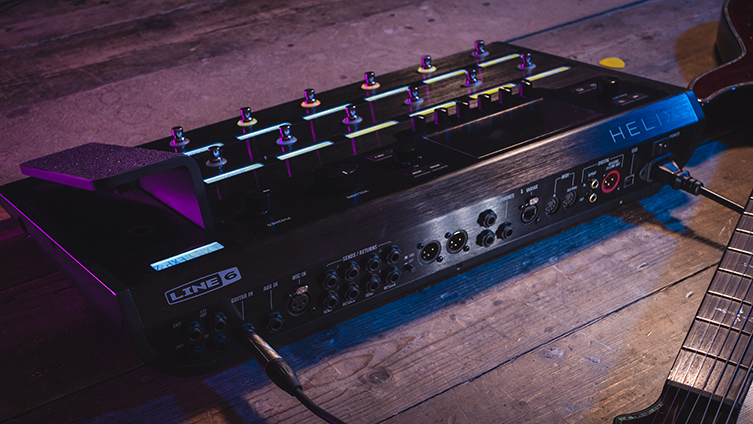
The range of the speakers (54Hz-30kHz on the smaller HS5, and 38Hz-30kHz on the largest HS8) is more than enough to cover guitar, extended range guitar and bass duties, and you can make use of the Helix’s IR section to add that elusive feel.
Stadium sound in your home practice space? Believe it!
Recording Guitar with the Helix and HS Monitors
The gear that takes care of your day to day playing is the same gear that will give you world-class recorded guitar parts, too.
Whichever DAW software you use to record with, it’ll easily recognise the Helix as an audio interface. Just connect it directly to your computer via USB and select it from the I/O menu on Pro Tools, Ableton or whatever you use. Latency will be a non-issue and all of your carefully worked-on tones can be used, exactly as they sound, in all of your recordings. The need to mic up cabinets and blast loud amps is entirely removed from the process.
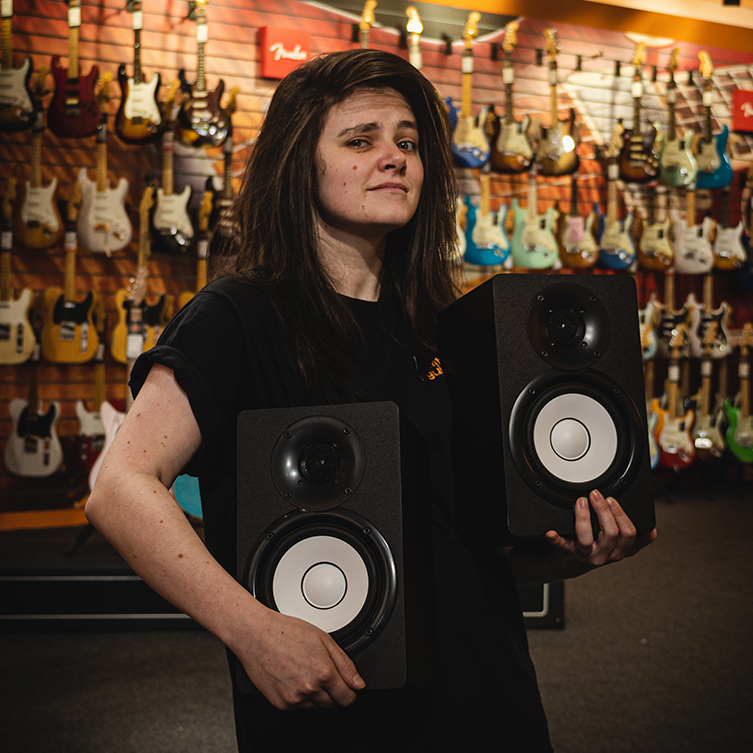
For monitoring, the easiest thing to do is plug the HS monitors into your audio interface and keep the Helix going direct to the computer via USB. Control the volume of what you’re hearing with your interface, get a flat-response playback of your work and enjoy diving in deep with your tones and mixes, happy in the knowledge that your setup isn’t adding anything false to the sound.
Take Control
Today's guide is hopefully food for thought for those intending to take that next, exciting step into digital guitar modelling. Yamaha’s HS speakers are not the most expensive, but they are, in my opinion the best in class, and outperform quite a few other major brands. I think they make a very effective partner to the awesome power of the Helix.
Take advantage of the potential available to you at home, and make every practice and recording session count. Why not sound excellent all the time?


